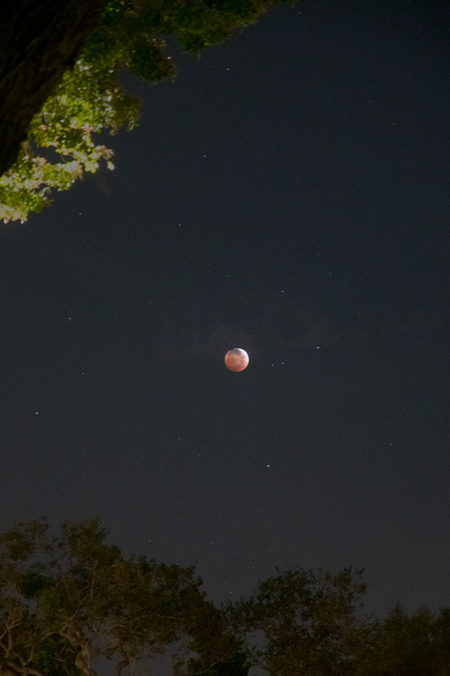 |
| lunar eclipse 5/26/21 4:15 AM pacific clearing clouds |
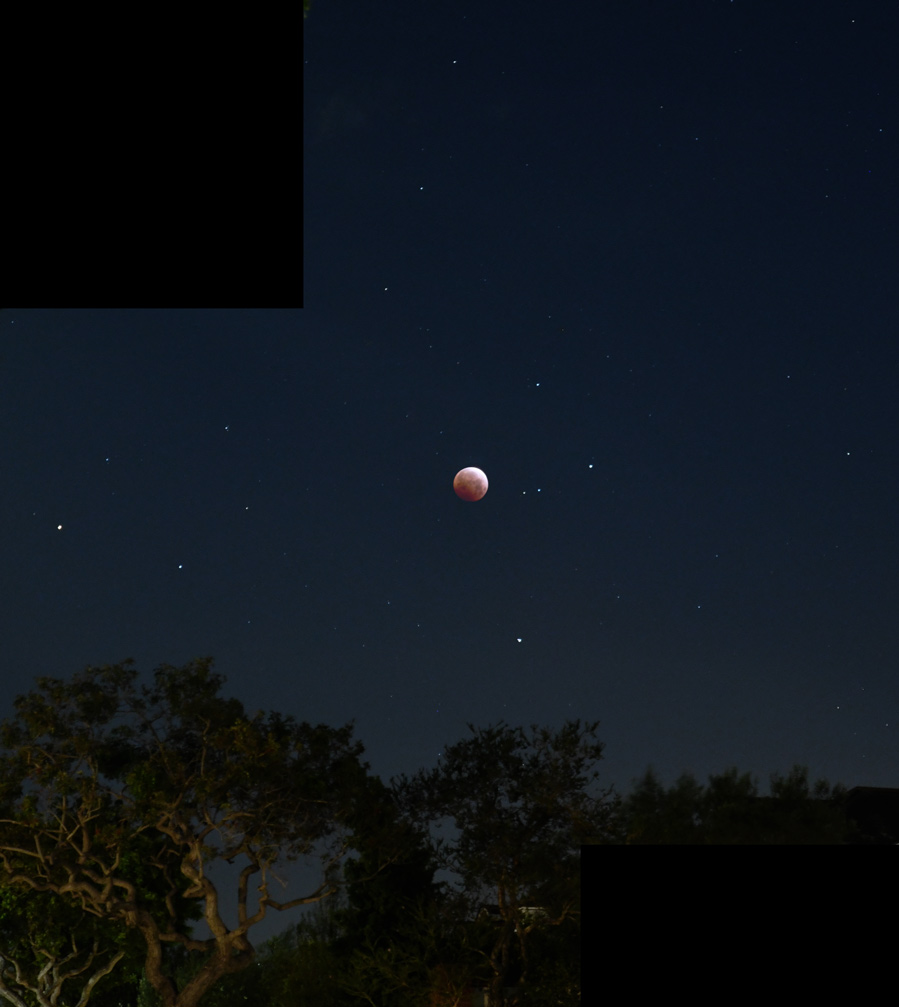 |
| lunar eclipse 5/26/21 composite image cropped bright lights |
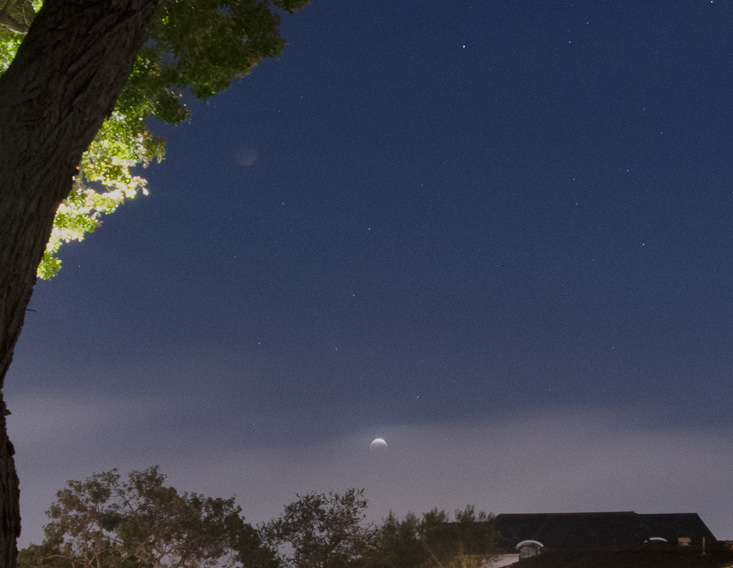 |
| partially eclipsed setting into cloud bank |
 |
| lunar eclipse 5/26/21 4:15 AM pacific clearing clouds |
 |
| lunar eclipse 5/26/21 composite image cropped bright lights |
 |
| partially eclipsed setting into cloud bank |
The sun burst out of its minimum this weekend with a series of explosions on Saturday May 22nd, the likes of which haven't been seen in years. While I missed the burst, I captured images of the offending spot on Sunday--my first solar images in 2 years:
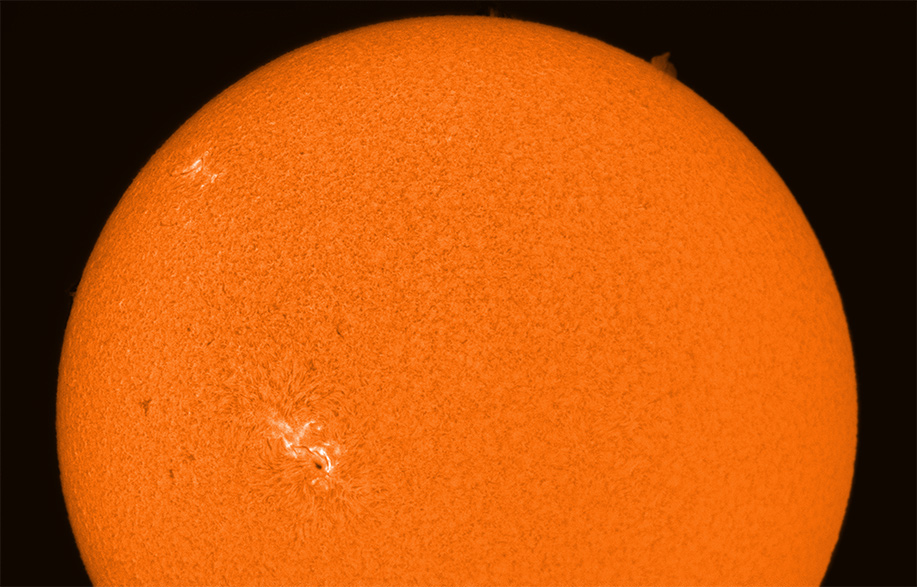 |
| AR 2824 and friends Ha 5/23/21 21:11 UTC |
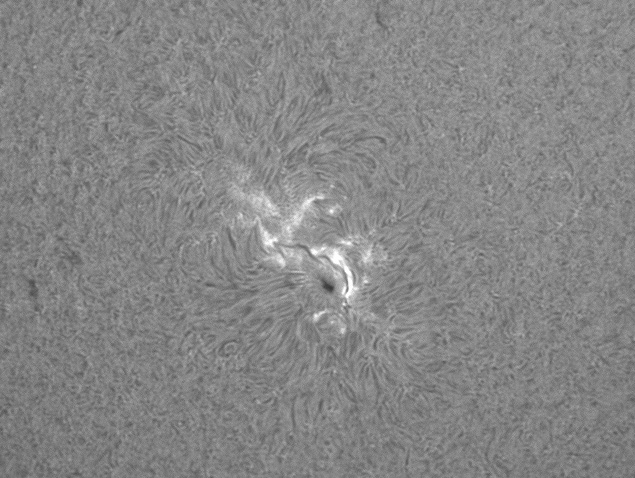 |
| AR2824 Ha 5/31/21 21:21 UTC |
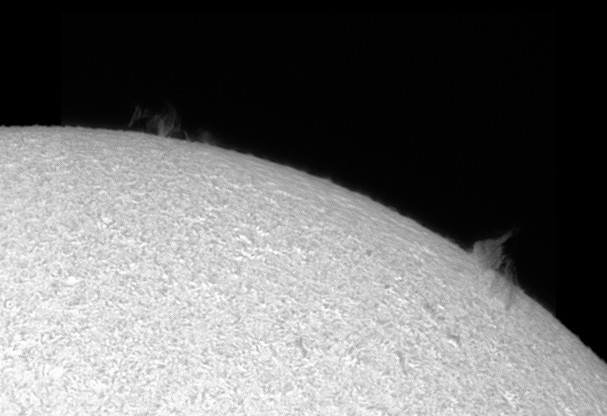 |
| Solar Prominences Ha 5/23/21 21:05 UTC |
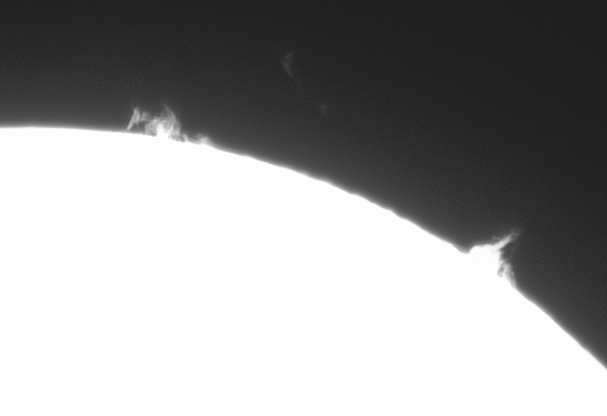 |
| Something lifting off? Ha 5/23/21 21:03 UTC |
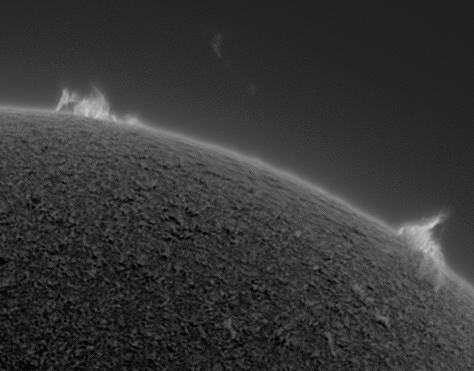 |
| artistic composite view (exclusion) Ha 5/23/21 |
The bursts are forecast to hit earth's magnetic field in the late hours of May 25th, potentially triggering auroras. A big bonus for north western viewers staying up late for the lunar eclipse in the wee hours of May 26th.
the accompanying radio bursts were so loud they drowned out a local thunderstorm (Thomas Ashcroft's radio data):
While NASA's Solar Dynamics Observatory recorded a series of flares:
Here's a list of annual sunspot activity over 15 years from spaceweather.com, a great site for solar activity information. showing the minima around 2019 and 2008, confirming an 11 year solar cycle that's been documented for centuries:
Spotless Days
Current Stretch: 0 days
2021 total: 46 days (32%)
2020 total: 208 days (57%)
2019 total: 281 days (77%)
2018 total: 221 days (61%)
2017 total: 104 days (28%)
2016 total: 32 days (9%)
2015 total: 0 days (0%)
2014 total: 1 day (<1%)
2013 total: 0 days (0%)
2012 total: 0 days (0%)
2011 total: 2 days (<1%)
2010 total: 51 days (14%)
2009 total: 260 days (71%)
2008 total: 268 days (73%)
2007 total: 152 days (42%)
2006 total: 70 days (19%)
Updated 24 May 2021
Image details:
Ha full disk Lunt 60 PT double stacked
zwo ASI 290MM
FPS (avg.)=39-178
Shutter=0.331-1.78ms
Gain=351 (unity)
East Bluff, CA
5/23/21
21:05-21:11 UTC
Mars is all over the recent news with a fleet of space craft arriving:
-NASA's perseverance pulled off a crazy landing with a supersonic parachute (which just sounds cool), followed by a heat shield, then rockets, and finally a sky crane lowering the lander into the dust with the rocket hovering above. NASA video.
-the UAE's Al'Amal (hope) is orbiting the planet and filming.
-China's Tianwen-1 is orbiting, preparing to send down a lander.
Perseverance is loaded with easter eggs including a binary message encoded in the parachute: "Dare Mighty Things", the motto of NASA’s Jet Propulsion Laboratory (JPL) and the coordinates of the JPL visitor's center: 34°11'58.0"N 118°10'31.0"W.
More easter eggs here
You can even follow the perseverance twitter account:
"Hobbies: Photography, collecting rocks, off-roading" 😄
so here's an excuse to process the rest of my mars opposition images. the following sequence shows the south polar cap slowly melting in the martian summer (though some of the change is due to rotation).
 |
| Mars 2020 Click for full size |
Here are a my conjunction images.
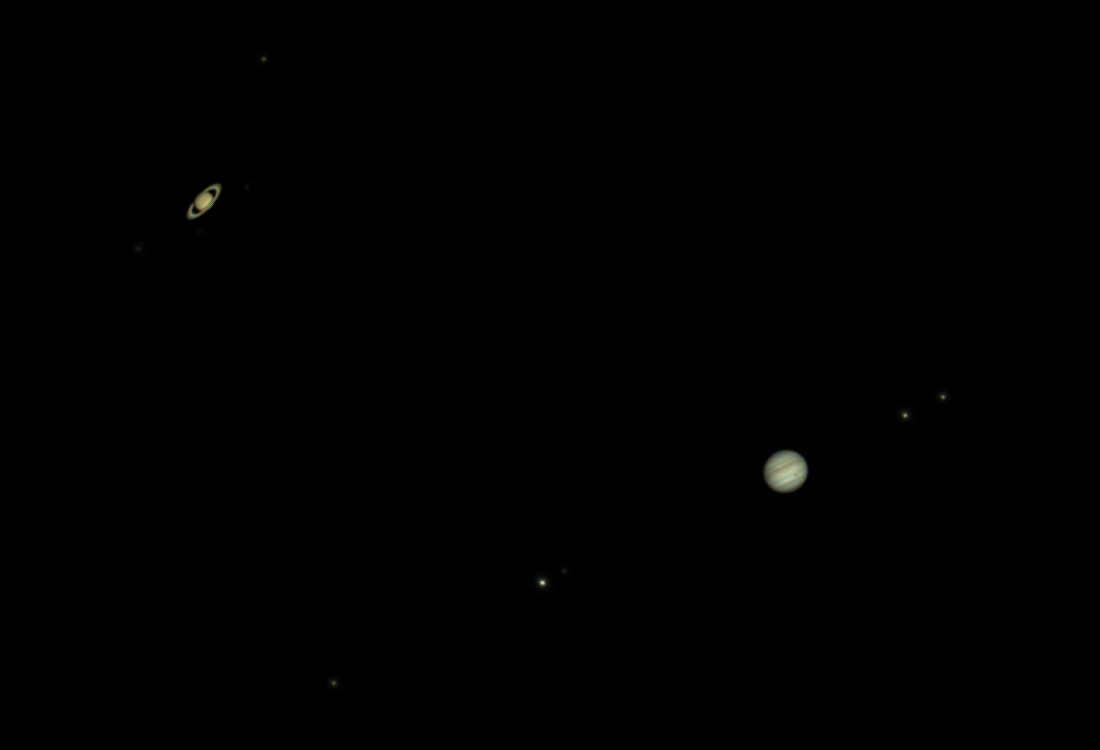 |
| 12/20/2020 note great red spot showing on Jupiter |
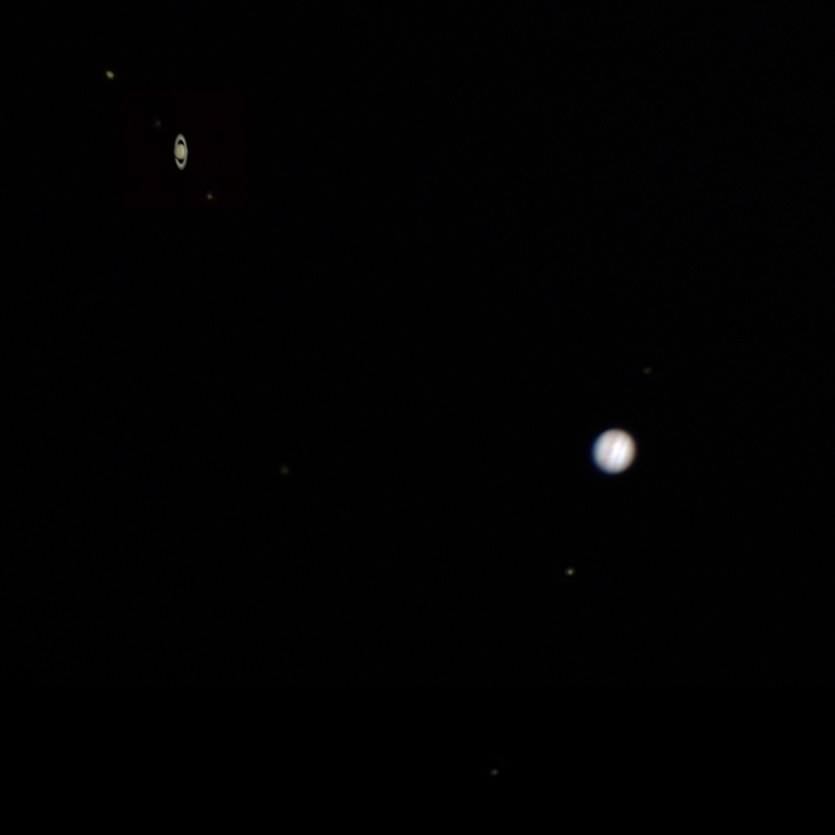 |
| Great Conjunction 12/21/2020 day of closest approach |
You'll note that Jupiter (which has four bright moons) appears to have 5 moons in the first image, but only 3 on the day of closest approach!? In the first, a background star is in disguise as a moon, while in the second, Ganymede is attempting to hide from view as it crosses the surface of the planet (see annotated versions below).
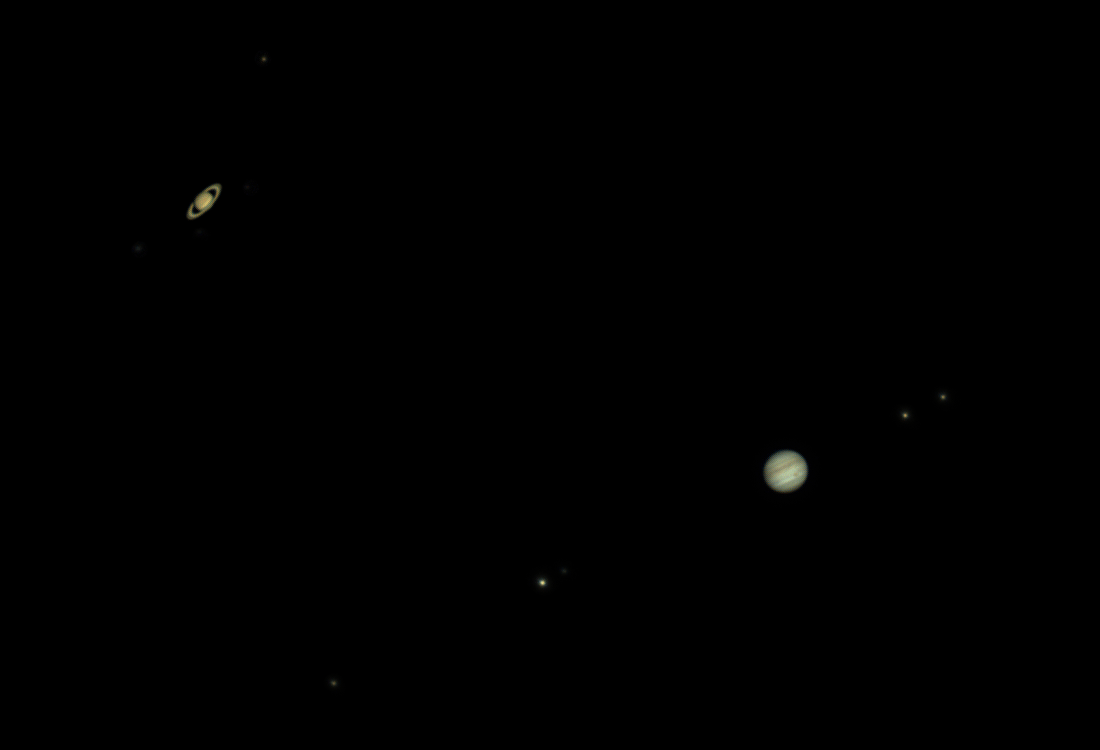 |
| 12/20/2020 |
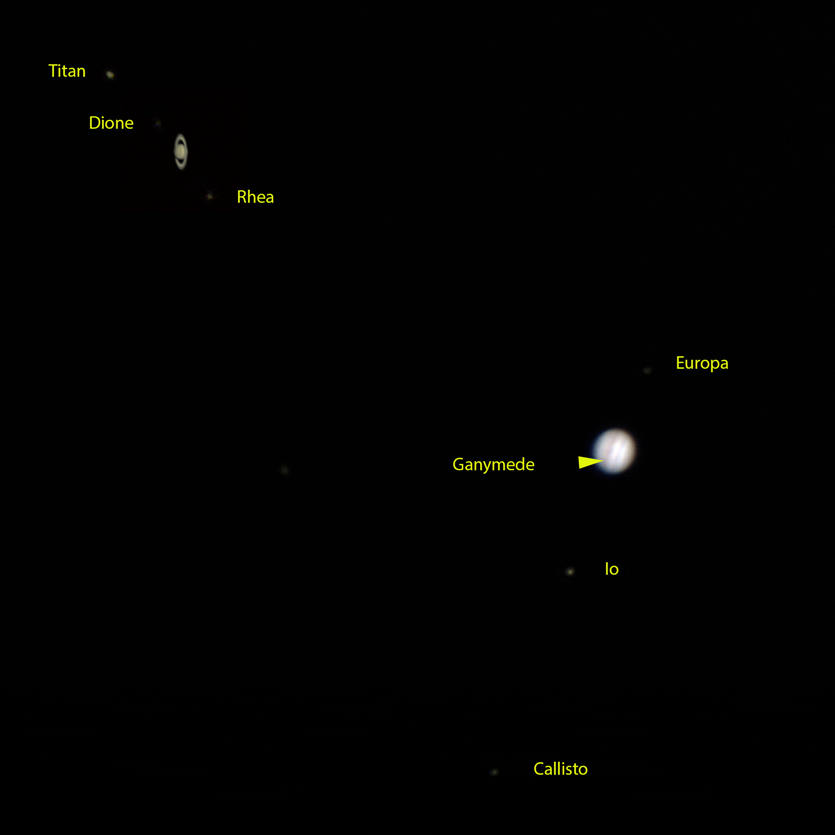 |
| 12/21/2020 |
The event was heralded by a fireball (bright meteor) seen by thousands. It ocurred at 5:11 PM pacific, less than 30 minutes after sunset with the southern sky still bright blue, making this the brightest I've ever seen. It looked like a firework with sparkles. Scott Young from our astronomy club put it better: "I was looking directly at the planets and the fire ball came from the north and traveled south. It burned up just after falling below the planets. Long streak with lots of fragments and a burst just before the burnout. I'm sure it was an Ursid". About 10 minutes after seeing it, I made a quick sketch as it was hard for me to describe the direction:
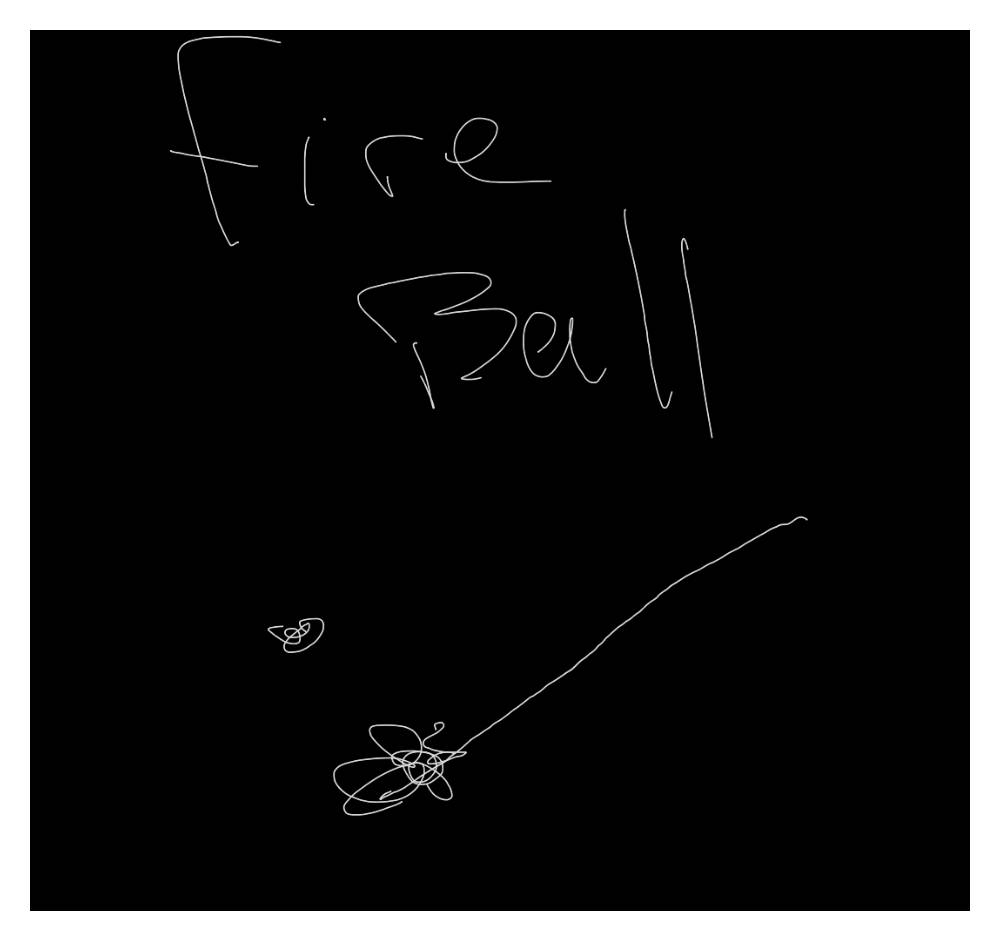 |
| you can see why i take pictures :) |
There were documented sightings from Santa Barbara to San Diego:
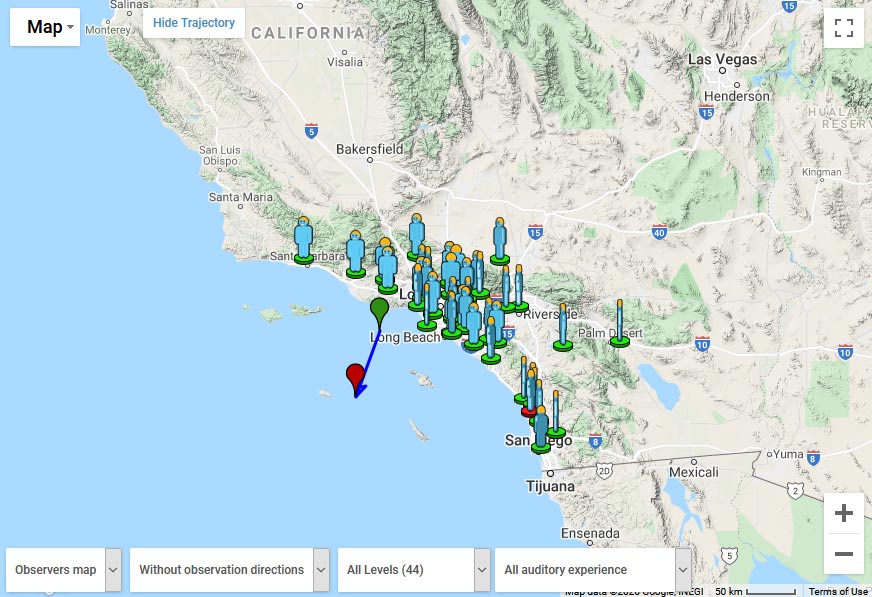 |
| very tall astronomers |
It has been labled as event 7964-2020 by the American Meteor Society. More info at links below:
American Meteor Society log of event 7964-2020 -includes video
december meteor forcast
ursid meteor shower
Image Details:
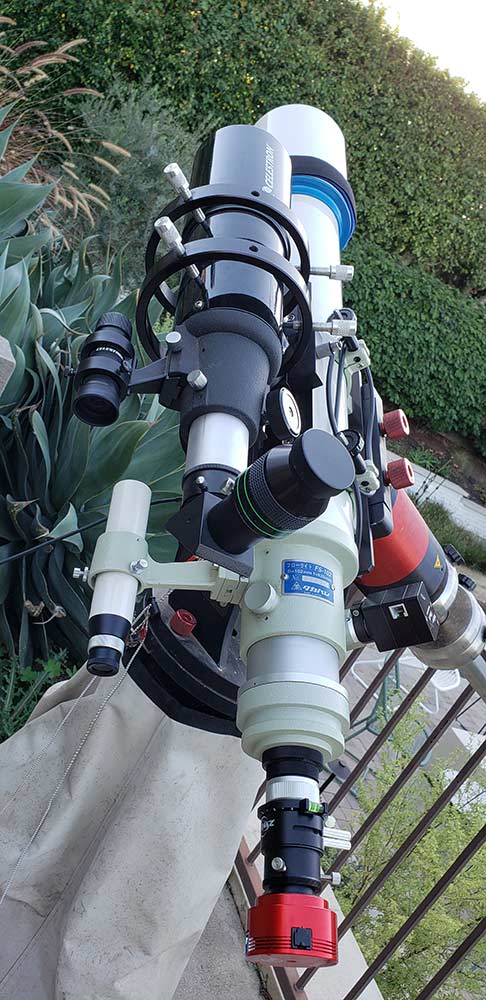 |
| Imaging rig including telescope for telescope for telescope. hedge obstructs low southern horizon :( |
The conjunction images are composites of multiple exposures: short tight crops at high frame rates for each planet. a combined image of the two planets with saturn much more faint relative to jupiter than in the composite. a longer exposure for the jovian moons, still longer for titan, and longest with a stretch for the faint moons of saturn.
Takahashi FS 102 at 820 mm, ZWO ADC, Baader IR/UV block filter, ZWO ASI 290 MC
captures ranged from 0.34 ms exposures at 400 fps to 100 ms at 8 fps
Eastbluff, CA 12/20/20 and 12/21/20
Taking a break from conjunction processing to post these larger images of the gas giants:
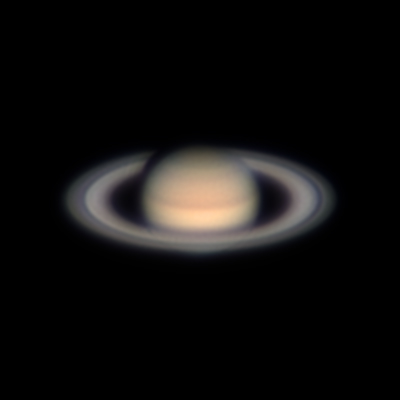 |
| Saturn 9-25-2020 03:49 UTC RGB |
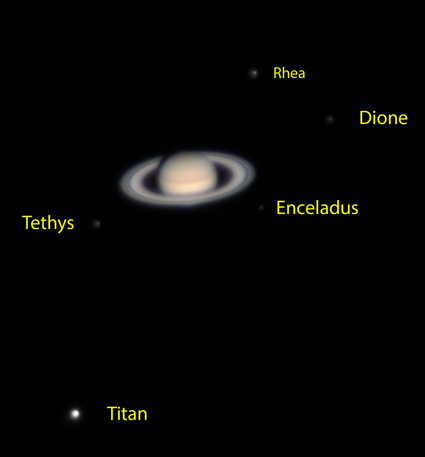 |
| Saturn 9-25-2020 03:49 UTC RGB |
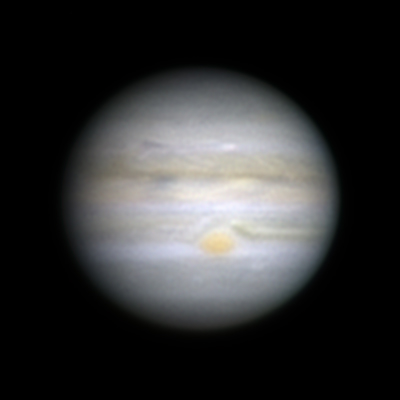 |
| Jupiter 9-25-20 03:23 UTC note white dot in the upper band, a disturbance in the northern equatorial zone noted this past summer |
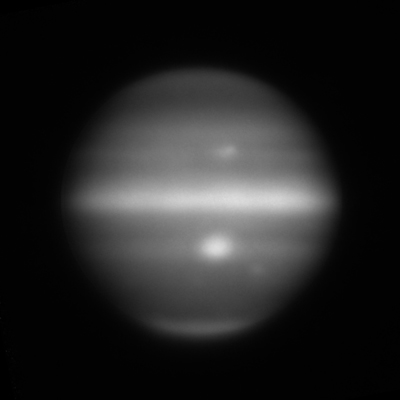 |
| Jupiter 9-25-20 03:23 UTC Methane filter enhancing disturbance in upper atmosphere of NEZ (white dot upper half) |
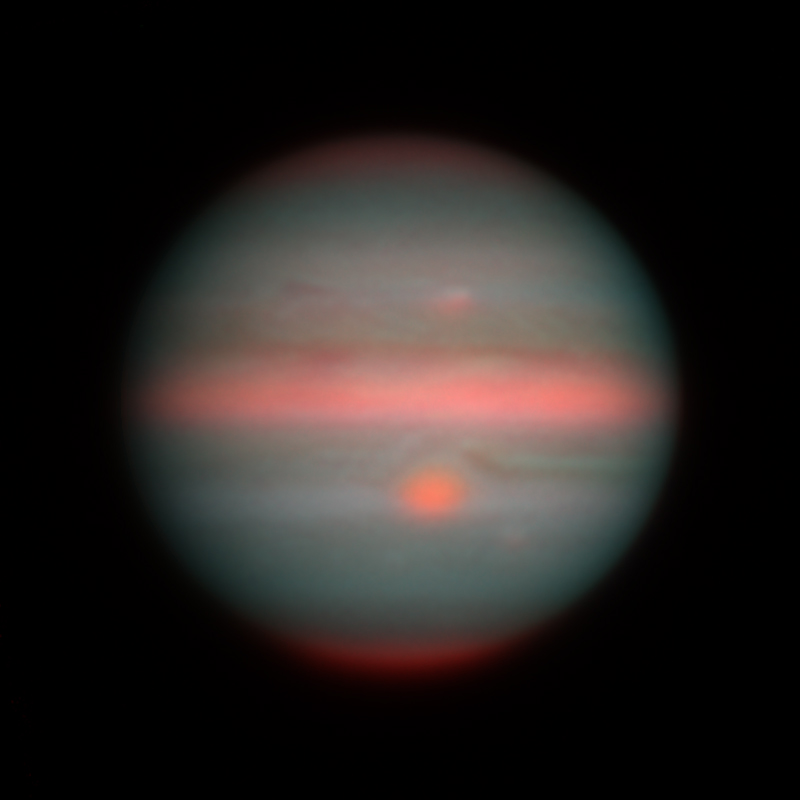 |
| Jupiter 9-25-20 03:23 UTC Methane filter as red, green, blue enhancing disturbance in upper atmosphere of NEZ |
Here a few wide fields and my attempt at imaging the classic winter meteor shower, the geminids (night before peak which was clouded out).
Orion Rising...winter is coming. when you see orion rising in the early evening, winter is on the way. note Betelguese (red "shoulder" upper left) no longer faded:
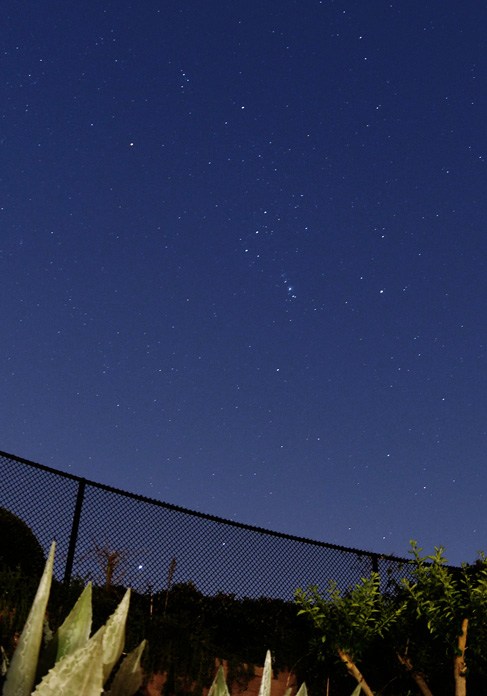 |
| Orion rising 12/12/20 have to do something about that fence :( |
here are a few hours worth of star trails. only one sad meteor, can you find it?
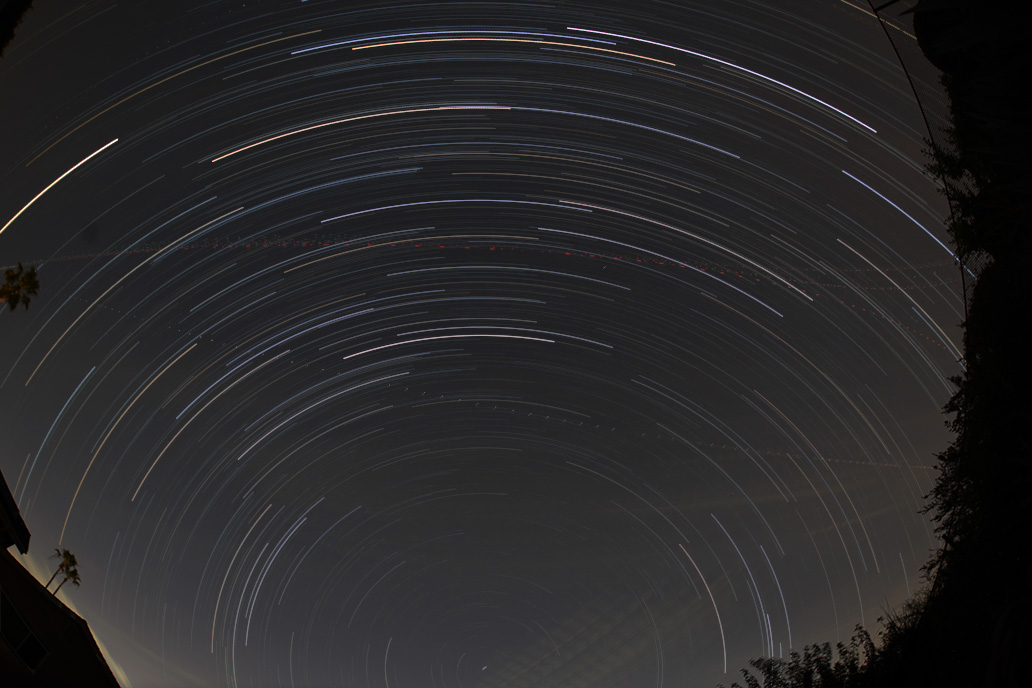 |
| Star trails 12/12/20 |
close up:
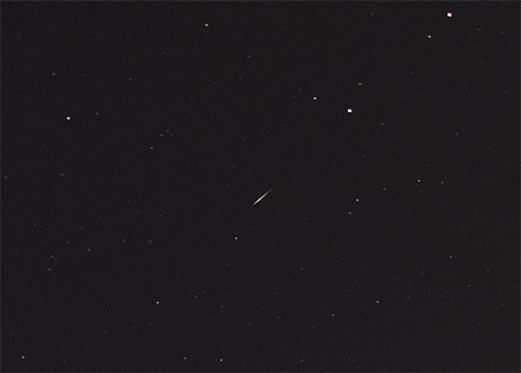 |
| a geminid |
Localized:
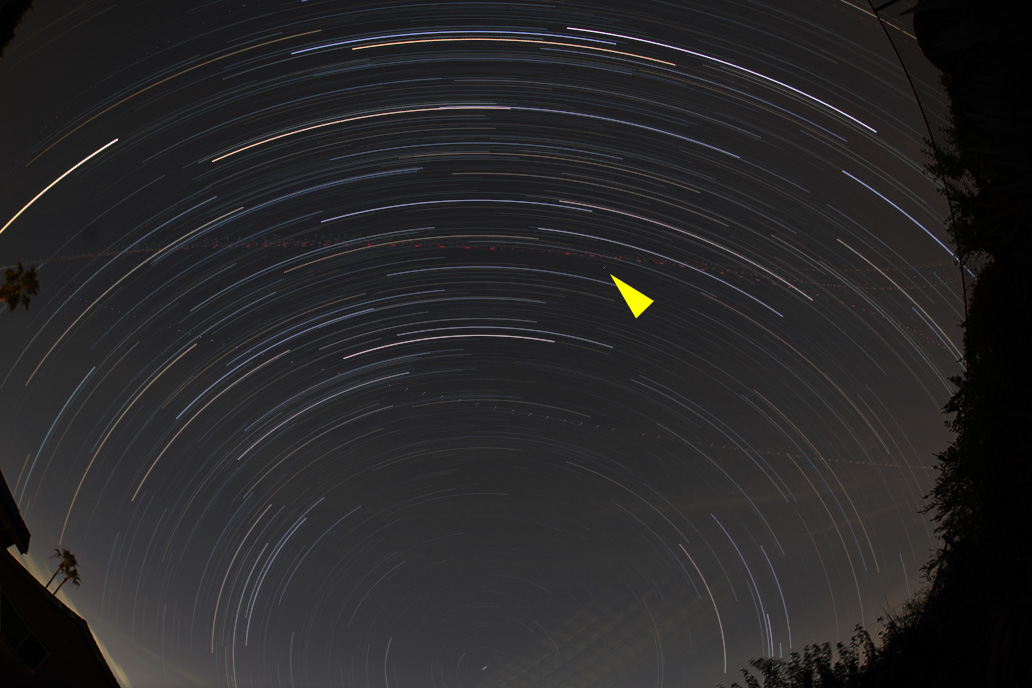 |
| a geminid 12/12/20 |
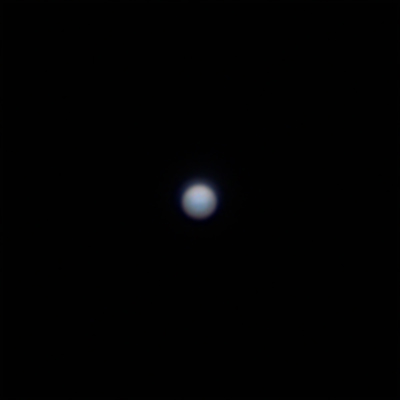 |
| Uranus 12/1/2020 07:15 UTC IR(685)-RGB Planetary north up |
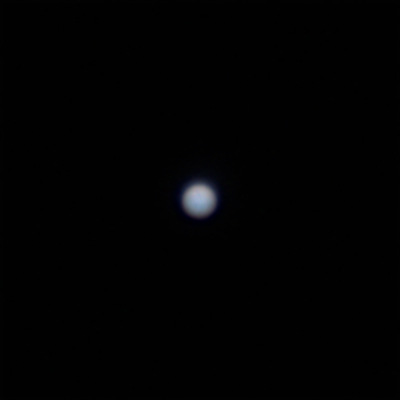 |
| Uranus 12/1/2020 07:15 UTC RGB |